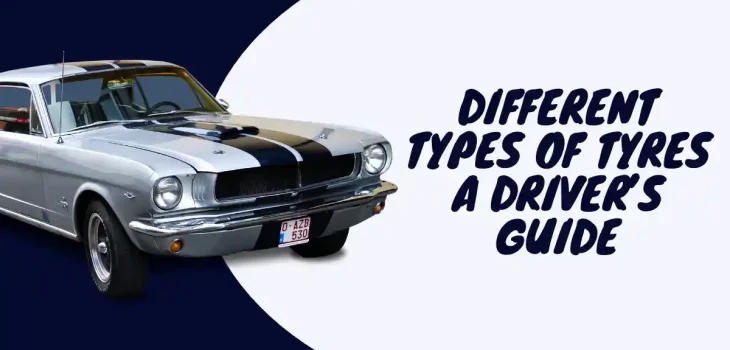Different Types of Tyres – A Driver’s Guide
The tyres are, arguably, the most important part of any car beyond the engine. They are the sole point of contact to the road, and their integrity is what ensures a safe and smooth ride for any driver or passenger. They are treated as such in annual MOTs, where tyre and brake issues carry serious consequences. According to recent statistics, a quarter of all ‘dangerous’ MOT failures in the last year were related to tyres or brakes. With regard to tyres, though, what do you need to know?
How Often Should I Replace My Tyres?
Many make the mistake of running their tyres into the ground – or, more accurately, when they approach that legal minimum tread depth of 1.6mm. Tread depth is not the only metric for tyre safety, though, and there are other symptoms that could indicate a change might be necessary.
For example, sidewall cracking can be an indicator of significant UV damage, while bulges in the tyre at any point can illustrate failure of an air seal within – and the potential for an imminent blow-out. Regardless these physical symptoms, it should be a habit for drivers to order new car tyres every 20,000 or ten years, whichever comes first. However, changing out your tyres is another matter, as is about to be discussed.
Summer/Winter Tyres
The major distinctions between types of tyres relate to weather conditions – making seasonal tyres the most common kinds of tyres on the market. There are two key types of seasonal tyre, in ‘summer’ and ‘winter’ tyres.
Summer tyres are designed for better traction on dry and warm roads in the warmer months. Road grip is dictated in part by tread depth and pattern, but the rubber compounds used to make the tyres themselves are a considerable factor. Summer tyres are soft rubber compound, that adheres well to the road; the tread pattern is such to prevent aquaplaning while maximising rubber in contact with the road.
Winter tyres, meanwhile, utilise a harder rubber compound that maintains its form and tactility in colder temperatures. This ensures the tyre doesn’t stiffen up and reduce traction. The treads are deeper and feature more grooves in order to give traction on wet, icy or snowy surfaces.
All-Season Tyres
All season tyres are a convenient alternative to seasonal tyres, but a design that does not offer the best of either world. All-season tyres remain relatively soft in all weather conditions, and have a tread pattern that strikes a balance between the requirements of each season.
Run-Flat Tyres
Run-flat tyres are a specialist kind of tyre, designed with road safety firmly in mind. The sidewall is shored up with a reinforced compound, that enables a short period of safe onward travel in the event of a tyre puncture.
Used/Part-Worn Tyres
Lastly, all of the above tyres can be purchased in a used, or ‘part-worn’, state, from garages and repair shops. It is entirely legal for businesses to sell used tyres, provided they meet road-legality requirements and are marked as used.
Buying used is a cheap and cheerful option that many drivers elect for over buying new, in order to eliminate costs where possible. However, it is not the wisest decision to make; the risk of incident is higher using worn tyres, particularly if you are not privy to exactly how worn they are.







